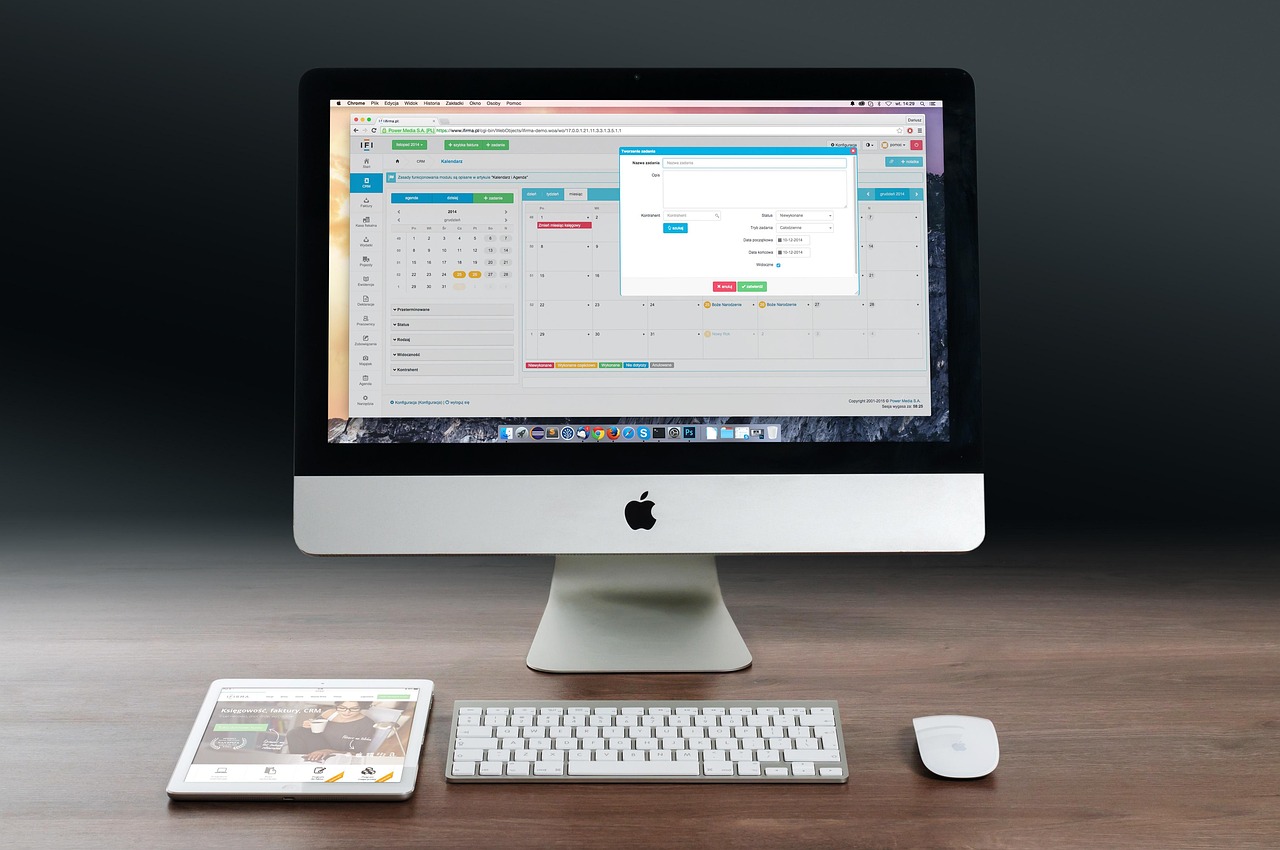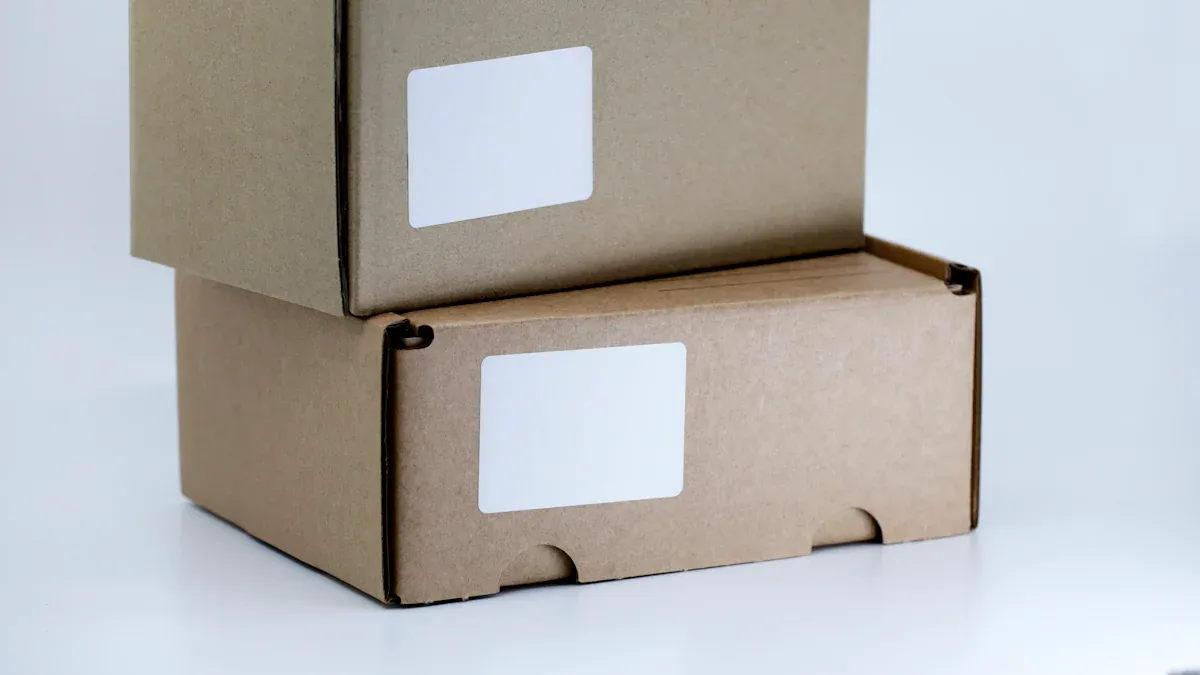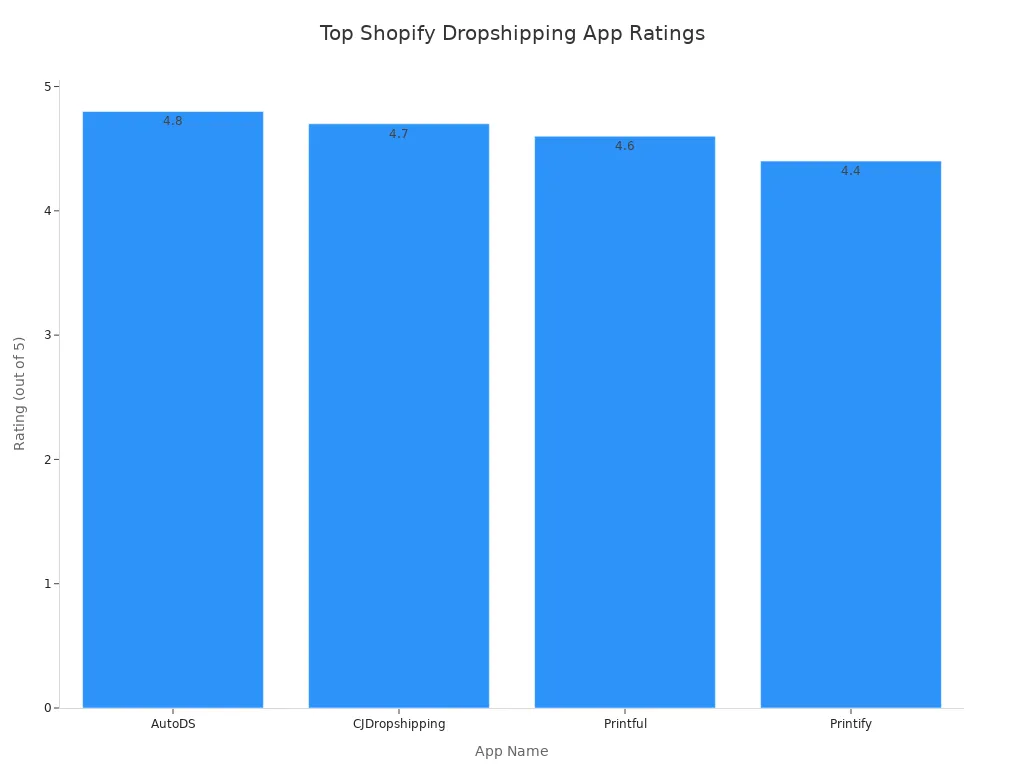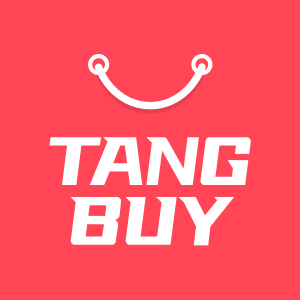Shopify Dropshipping Simplified - Step-by-Step Guide for 2025

Is Shopify Dropshipping still a good idea in 2025? Yes, it is. You can begin with low risk and not much money. This is great if you want to try it out first. Many new shops are opening, and the market is getting bigger. Look at these facts:
Statistic Description | Value/Percentage |
|---|---|
Increased from 5.16% to 12.82% | |
Success rate of dropshippers in their first year | 10% |
Businesses adopting dropshipping as primary model | Approximately 27% |
Dropshipping stores earning more than $50K monthly | Only 1.5% |
Dropshipping market size forecast for 2025 | $372.47 billion |
Most shops make between 15% and 20% profit. You just need to follow the right steps and use new strategies. Then you will be ready to begin.
Key Takeaways
Shopify dropshipping is still a good business in 2025. It does not cost much to start. There are more chances to make money now.
Use AI and automation tools to save time. These tools help you find popular products. They also help you run your shop better.
Pick your niche with care. Choose products that many people want. Make sure you can earn good money from them. This helps you do well.
Make your brand strong with the same style everywhere. Give great customer service. This will help you get and keep loyal customers.
Test suppliers before you choose them. Check their products, shipping speed, and support. Only work with suppliers you trust.
Use dropshipping apps like DSers and AutoDS. These apps help you add products fast. They also help you send out orders without much work.
Tell people about your shop on social media. Use paid ads and email campaigns too. This helps you reach more people and sell more.
Use analytics tools to watch how your shop is doing. Change your plans if you need to. This helps your business grow over time.

Shopify Dropshipping in 2025

Trends
You may wonder what is different in Shopify Dropshipping this year. Things change often, so you must keep learning to do well. Here are some big trends for 2025:
AI and automation tools are used a lot now. They help you find products, manage stock, and answer customer questions quickly.
Many people start AI-built Shopify stores. These stores already have trending products and ready-to-sell pages. This means you can begin selling sooner.
Automation platforms like AutoDS make it easy to add products, fill orders, and check prices and stock. You do not need to do much by hand.
AI-driven tools help you find popular products and see what is trending on social media.
Print-on-demand services are common. You can sell custom products for more money, so you earn more profit.
Sellers now focus on seasonal and niche products. Some popular niches are furniture, electronics, pet supplies, home decor, and office products.
Data-driven insights help you choose the best products, especially during busy times like holidays.
Using AI, automation, and smart product choices is now normal for Shopify Dropshipping.
Tip: Try at least one AI tool for product research or store management. It can save you a lot of time every week!
Profitability
You might want to know if Shopify Dropshipping can still make money in 2025. The answer is yes, but you must be clever. Making money depends on a few important things:
Pick your niche carefully. Special or high-value products often give better profits.
Build a strong brand. Loyal customers are cheaper to keep and spend more.
Use more than one supplier. This helps you avoid problems with shipping or quality.
Keep your costs low. Watch out for shipping fees, platform charges, and marketing costs.
Get products from local or tariff-free suppliers if you can. This helps you avoid extra costs from tariffs and inflation.
Use upselling and cross-selling to make each order bigger.
Give your customers a great experience. Fast checkout and good service mean more people come back.
Stay flexible. If you see a new trend or market, act fast.
To make money with Shopify Dropshipping in 2025, you must adjust to changes in the economy. Find better products, focus on higher profits, and always try to improve your brand and service. If you control your costs and keep customers happy, you can still run a good business.
Myths
You may have heard things about Shopify Dropshipping that are not true. Let’s look at some common myths:
Myth: Dropshipping is a scam or a get-rich-quick scheme.
Some people think you can get rich fast. But real dropshippers work hard, plan well, and build their business step by step.Myth: Shipping takes too long, so customers won’t buy.
You can use suppliers with faster or local shipping. If you tell customers what to expect and give good service, most will wait.Myth: Profit margins are too low.
You can earn good profits by choosing high-margin products, setting smart prices, and using upselling.Myth: Dropshipping is passive income.
You must work hard. You need to research products, manage suppliers, and keep up with marketing and customer service.Myth: The market is too crowded for new shops.
Some niches are busy, but there are always new trends and markets. Google Trends shows dropshipping is very popular now. Apps like DSers get many new installs every day, and top stores get thousands of visitors.
Note: The global dropshipping market keeps getting bigger. In 2024, it was worth $351.8 billion, and experts think it will grow more. Shopify Dropshipping is still a real chance, especially if you want to learn and change.
Getting Started

Store Setup
You want to start your Shopify dropshipping journey. The first step is setting up your store. Shopify makes this easy, even if you have never built a website before. Here’s how you can get started:
Decide if dropshipping fits your goals. Think about your skills in marketing and managing products.
Pick a niche. Choose a market that interests you and has demand. This helps you stand out.
Look at your competitors. See what they do well and where you can do better.
Find a reliable supplier. Check their product quality, shipping speed, and if they charge extra fees.
Select your products. Set prices that give you a good profit but still attract buyers.
Build your store using Shopify’s tools. You can use free, professional themes to make your shop look great.
Choose a business structure. Write a simple plan for your goals and how you will reach them.
Set up your finances. Add payment methods and think about how you will track your money.
Plan your marketing. Use SEO, social media, and good customer service to get your first sales.
Tip: You do not need to be a tech expert. Shopify guides you step by step, so you can launch your store quickly.
Free Trial
Shopify gives you a chance to try everything before you pay. In 2025, you get a 3-day free trial. You do not need a credit card to start. After the trial, you can pay just $1 per month for the next three months. This gives you up to 93 days to build and test your shop.
During this time, you can:
List as many products as you want.
Handle unlimited visitors.
Customise your store with your own logo and colours.
Use fraud analysis to keep your shop safe.
Create manual orders and discount codes.
Set your own prices and try different strategies.
Recover abandoned carts to win back customers.
Manage staff if you have a team.
Check detailed reports to see how your shop is doing.
You cannot sell products during the first 3 days, but you can get everything ready. Once you upgrade to the $1 plan, you can start selling. Shopify Plus plans do not include this offer.
Note: Use your trial to test different themes and layouts. Try out features like discount codes and abandoned cart recovery. This helps you learn what works best for your shop.
Branding
Branding helps your shop stand out. You want people to remember your store and trust you. Start by picking a niche that matches your interests and has loyal customers. This makes it easier to connect with your audience.
Build a strong brand identity. Create a logo, choose your colours, and write a short story about your shop. Use the same style and voice everywhere—on your website, social media, and emails. This makes your shop look professional.
Here are some simple ways to build your brand:
Focus on a niche. This helps you understand your customers and what they want.
Make your shop look good. Use a free Shopify theme and add your logo and colours.
Work with suppliers who offer custom packaging. This makes your orders feel special.
Pick products that fit your brand. Do not add random items just to fill your shop.
Share your story on social media. Talk about why you started and what makes your shop different.
Give great customer service. Answer questions quickly and solve problems fast.
Ask for feedback. Use reviews and loyalty programmes to keep customers coming back.
Tip: Branding is not just about looks. It is about how you make your customers feel. A strong brand builds trust and keeps people coming back for more.
Niche Selection
Picking the right niche is very important. It can help you do well in dropshipping. If you choose a niche with lots of buyers and not many sellers, you have a better chance to win. Let’s see how you can find and check a good niche for your Shopify shop in 2025.
Research Tools

You do not need to guess what will sell. There are many tools that help you spot trends and check out other shops. These tools also help you find good products to sell. Here is a table that shows some top tools for 2025:
Tool Name | Pricing Range | Key Features | Target Users |
|---|---|---|---|
Sell The Trend | $39.97/month | Product discovery, trend analysis, store automation, 1-click imports | Beginners, established sellers |
Ecomhunt | Free, £23, £39 | Winning product curation, Facebook ads targeting, analytics | Beginners, intermediate sellers |
Niche Scraper | £39/month | Product scraper, video maker, store analysis | Intermediate, advanced sellers |
SaleSource | £39/month | Product discovery, store analysis, competitor research | All levels of sellers |
Pexda | £12, £20 | Product database, AliExpress product analysis, video maker | Beginners, intermediate sellers |
Thieve | Free, £12, £23 | Product curation, trending product discovery, audience insights | Beginners, social media-focused sellers |
Dropship Spy | £16/month | Winning product database, competitor spying, audience builder | Intermediate, experienced sellers |
AliExpress Dropshipping Center | Free | Product search, supplier analysis, order management | Beginners, AliExpress-focused sellers |
AliShark | Free, £16 | Product research, competitor analysis, ad spy | Intermediate, advanced sellers |
AutoDS is another tool you can use. It has many features for niche research. The Ads Spy Tool lets you see what is popular on TikTok and Facebook. The Marketplace & Winning Products Hub shows you top products in many niches. You get tips based on real sales, so you know what is selling well. AutoDS can also handle orders for you, so you do not have to do it all yourself.
Tip: Try free trials before you pay for any tool. This helps you find the one that works best for you.
Validation
After you find a niche you like, you need to check if it is a good choice. Use these steps to make sure your niche is worth your time:
Pick a niche that people want all year, not just for a short time. This helps your shop last longer.
Make sure your suppliers are good at dropshipping and send quality products.
Choose a niche where buyers are excited and come back again.
Look for products that give you a good profit. You want your work to be worth it.
Go for niches with low shipping costs and few problems. This makes things easier.
Test your niche with tools like Dropship.IO. Check if people really buy these products.
Think about growing your shop. Pick a niche where you can add more products later.
Learn about your buyers. Make sure enough people want what you plan to sell.
Choose a niche you like. You will enjoy your work and connect better with your buyers.
Note: Treat your dropshipping shop like a real business. Start small, use your profits to grow, and let data guide your choices. This gives you the best chance to do well in 2025.
Competitor Analysis

Identifying Competitors
You want to know who you are up against before you launch your Shopify dropshipping store. Spotting your competitors helps you learn what works and what does not. Here is a simple way to find them:
Search Google using keywords related to your products. Look at both the ads and the regular search results. You will see which shops show up most often.
Check big e-commerce sites like Amazon, eBay, and Etsy. Type in your product names and see which sellers appear. These are your direct and indirect competitors.
Explore social media. Use hashtags and join groups that match your niche. You will find other shops selling similar items.
Look at ads on Facebook and Google. Tools like Facebook Ads Library let you see what kind of ads your competitors run.
Use tools like SimilarWeb, Ahrefs, or SEMrush. These show you how much traffic your competitors get and which keywords they target.
Visit competitor websites. Check their product range, prices, and customer reviews. See how they design their site and what makes them stand out.
Try store analysis tools like Koala Inspector or DropShip Spy. These reveal best-selling products, apps used, and even estimated sales.
Do a reverse image search on product photos. This can help you find out which suppliers your competitors use.
Tip: Keep checking your competitors regularly. The market changes fast, and new shops pop up all the time.
Differentiation
You do not want your shop to look like every other dropshipping store. Standing out is key if you want customers to choose you. Here are some ways you can set your store apart:
Focus on product quality. Test samples and work with trusted suppliers. Customers notice when products last longer and work better.
Show real reviews and use social proof. Partner with influencers or ask buyers to leave feedback. This builds trust and helps new shoppers feel safe.
Make shopping easy. Use a fast website, simple menus, and offer many payment options. Add live chat or chatbots so customers get help right away.
Offer something unique. This could be a special design, custom options, or features that solve a problem. Even small changes can make a big difference.
Use smart pricing. Try bundle deals, free shipping over a certain amount, or psychological pricing to make your offers more attractive.
Keep up with trends. Offer eco-friendly packaging or personalised products. Many shoppers love these extras.
Run clever marketing. Use SEO, social media, and email to reach more people. Tools like Omnisend help you send emails and texts automatically.
Give great customer service. Fast replies and helpful support turn first-time buyers into loyal fans.
Note: You do not need to do everything at once. Pick two or three ideas and try them out. Watch what works and keep improving your shop. This way, you will always stay ahead of the competition.
Supplier Sourcing

Finding good suppliers is very important in dropshipping. Good suppliers help you offer better products and faster shipping. Your customers will have a smoother experience. Here is how you can find suppliers for your Shopify shop in 2025.
Platforms
There are many platforms to help you find dropshipping suppliers. Each platform has its own good points. Here is a quick look at some top choices:
Platform | Key Features | Pros | Cons |
|---|---|---|---|
AliExpress | Huge product range, global shipping | Easy to start, low prices | Long shipping times, mixed quality |
Zendrop | Fast shipping, education, 500,000+ products | Shopify integration, quick delivery | Subscription cost, higher prices |
SaleHoo | Verified suppliers, market research tools | Trusted suppliers, great support | Some higher fees, limited dropshipping |
Wholesale2B | 1M+ products, easy integration | Wide selection, inventory management | Can be overwhelming, low margins |
Curated suppliers, user-friendly | Easy to use, product export | Expensive membership, fewer suppliers | |
Modalyst | High-quality fashion, real-time inventory | Trendy products, automated orders | Costly plans, mostly fashion |
Spocket | US/EU focus, fast shipping | Quick delivery, good support | Limited selection, premium cost |
Printful | Print-on-demand, custom merchandise | High-quality print, easy setup | Lower margins, fewer product types |
CJDropshipping | Vast catalogue, private label services | Fast shipping, diverse products | Communication issues, quality control |
Sunrise Wholesale | US-based, branded products | Fast shipping, clear pricing | Higher prices, limited international |
You can also try other platforms for more choices. Some focus on electronics, others on branded or luxury goods. Many work with Shopify, so you can add products easily.
Tip: Start with one or two platforms that fit your niche. Test their products before you add more.
Supplier Vetting
Not all suppliers are the same. You want to work with the best ones. Here is how you can check your suppliers:
1. Do not pick suppliers who charge high monthly fees. Good suppliers usually charge small fees per order. 2. Choose suppliers who do not sell straight to the public. This helps you get real wholesale prices. 3. Pick suppliers who let you order small amounts. Dropshipping works best with flexible orders. 4. Make sure the supplier’s staff know their products well. Ask questions and see if they help you. 5. Get a support contact just for you. This makes it easier to fix problems quickly. 6. Choose suppliers who use technology like real-time stock updates and order tracking. 7. Place a test order. Check how fast they ship and if the product arrives safely. 8. Use Shopify apps like Printify, Gelato, Syncee, or Spocket to find and manage suppliers. 9. Look in directories like SaleHoo or go to trade shows to find more suppliers.
Note: Always test your supplier before you trust them with your customers’ orders.
Pitfalls
Finding suppliers can be hard. Here are some common problems and how to avoid them:
Many shops use the same suppliers. Your products might look like everyone else’s. You can stand out by making your website special or trying private label dropshipping.
Some suppliers are not honest. Look for fair rules, good reviews, and local warehouses.
Stock problems happen a lot. If your supplier runs out, you lose sales. Use real-time stock tools and work with more than one supplier.
Shipping delays can make customers unhappy. Pick suppliers with fast, reliable shipping and keep your customers updated.
Uploading products by hand takes a lot of time. Use tools that add products automatically to save time.
Sometimes, you cannot use your own branding on packages. Choose suppliers who offer branded packaging or add personal touches through your website and marketing.
Remember: Building good relationships with your suppliers helps you fix problems faster and keeps your business running well.
Shopify Dropshipping Apps

When you run a Shopify Dropshipping store, you need the right apps to save time and make your work easier. These apps help you find products, connect with suppliers, and handle orders without much effort. You do not have to do everything by hand. Let’s look at how these apps work and why you should use them.
DSers
DSers is one of the most popular dropshipping apps for Shopify. You can use it to find cheaper and better suppliers. DSers lets you import thousands of products from AliExpress and Tmall with just a few clicks. You can manage more than one Shopify store from one account, which is great if you want to grow your business.
Here are some things DSers does for you:
Suggests trending products using AI.
Lets you map products to different suppliers.
Helps you place hundreds of orders at once.
Syncs order status and tracking numbers automatically.
Supports secure payments like PayPal and Stripe.
Gives you 24/7 customer support.
Tip: Try batch order placement. You can save hours every week, especially when you get lots of sales.
Product Import
Importing products is easy with dropshipping apps. You do not need to copy and paste details or upload photos one by one. DSers and other top apps let you add products to your shop in seconds. You can edit product names, prices, and descriptions before you publish them. This helps you make your shop look unique.
Other apps like AutoDS, Spocket, and CJDropshipping also offer quick product import. Here’s a table showing some of the best apps and what they offer:
App Name | Rating | Pricing | Key Features |
|---|---|---|---|
AutoDS | 4.8 / 5 | From $9.90/month | Automation, product research, order fulfilment, price & stock monitoring |
Printful | 4.6 / 5 | From $9/month | Print-on-demand, custom branding, mockup generator |
CJDropshipping | 4.7 / 5 | Free (fees may apply) | Product sourcing, fast fulfilment, great support |
Printify | 4.4 / 5 | $29/month plan | Wide range, affordable, fast delivery, mockup generator |
You can see how these apps compare in the chart below:

Automation
Automation is a big reason why dropshipping apps are so useful. You do not have to check stock or update prices by yourself. DSers and similar apps handle this for you. They update your shop when a supplier changes prices or runs out of stock. You can also track orders and send updates to your customers without lifting a finger.
Here’s what automation can do for you:
Place and pay for many orders at once.
Sync tracking numbers from AliExpress to your shop.
Manage inventory and pricing updates automatically.
Run several Shopify stores from one dashboard.
Note: Automation lets you focus on growing your business instead of doing boring tasks. You get more time to find new products and talk to your customers.
Shopify Dropshipping apps like DSers help you connect with suppliers, import products, and automate your shop. You can run your business with less stress and more control.
Product Pages
Descriptions
You want your product descriptions to do more than just list features. They should help your customers imagine using the product in their daily lives. Start with a clear title and a short, catchy summary. Use simple words and short sentences. Focus on the benefits, not just the details. For example, instead of saying “100% cotton”, you could say “Soft, breathable fabric keeps you comfortable all day”.
Try using bullet points for key features. This makes your page easy to scan. Add important details like size, material, and care instructions. If you answer common questions in your description, you will save time on customer service. Many successful shops also use collapsible sections for longer information, so your page stays tidy.
Tip: Use customer reviews and trust badges near your description. This builds trust and helps shoppers feel safe buying from you.
Pricing
Setting the right price can make or break your shop. You have many options, and the best one depends on your product type. Here is a quick guide:
Product Category | |
|---|---|
Low-ticket (£0–£8) | Fixed markup, Free plus shipping |
Medium-ticket (£8–£24) | Cost-based, Bundle pricing |
High-ticket (£24+) | Value-based, Premium pricing |
All ranges | Tiered markup, Competition-based, Psychological |
If you sell low-cost items, you might use a fixed markup or offer “free plus shipping” deals. For mid-range products, try bundle pricing to encourage bigger orders. High-ticket items work well with value-based or premium pricing, but you must show why your product is worth more.
Psychological pricing, like £19.99 instead of £20, can also boost sales. Keep an eye on your competitors and adjust your prices if needed. Test different strategies and see what works best for your shop.
Note: Premium pricing only works if your product quality and service match the higher price. Always check your costs and profit margins before setting prices.
Visuals
Photos and videos are the first things your customers notice. You want to make a great impression. Use at least eight high-quality images for each product. Show your product from different angles and in real-life situations. Lifestyle shots help shoppers picture themselves using your product, which makes them more likely to buy.
A short video can show how your product works or highlight special features. Many shoppers trust what they see more than what they read. Add customer photos and video reviews if you can. This adds social proof and builds trust.
Did you know? Up to 90% of buyers say photo quality is the most important factor when shopping online. Fast-loading, mobile-friendly images keep people on your page longer.
You can also use apps to add review sections, FAQs, and trust badges. Make sure your product page loads quickly and looks good on mobile. Test your pages often and keep improving them. A great product page can turn visitors into happy customers.
Legal & Finance

Registration
You need to register your dropshipping business before you start selling. This step helps you stay legal and makes it easier to handle taxes and payments. In 2025, rules have become stricter, so you must follow them closely.
Register your business with your local government. Many places let you do this online.
Choose a business structure. You might start as a sole trader, partnership, or limited company. Each has different rules for taxes and paperwork.
Get any licences or permits you need. Some products, like food or supplements, need special approval.
If you are under 18, you need a parent or guardian to help you register and open accounts.
Apply for a tax ID, such as an EIN in the US. This lets you open a business bank account and keeps your personal details safe.
Draft clear contracts with your suppliers and payment providers.
Write a return and refund policy for your shop.
Use automated tools to keep records of your sales, payments, and taxes.
Tip: Registering your business makes you look more professional and helps you avoid problems with banks or tax offices later.
Taxes
You must pay attention to taxes from the start. Tax rules can be confusing, but you can manage them with the right tools and advice.
Pay income tax on your profits. The amount depends on your business structure and where you live.
Collect sales tax if you sell to customers in places where you have a tax “nexus”. This means you have a connection, like a warehouse or lots of sales in that area.
If you sell to other countries, you may need to collect VAT or GST. The EU and UK have special rules for this.
Some products have import duties. These depend on where your goods come from and where you send them.
Use Shopify’s built-in tax settings or apps like TaxJar and Avalara to automate tax collection and filing.
Keep good records of all your sales and expenses. This makes tax time much easier.
You can claim tax deductions for things like marketing, software, shipping, and office costs.
If you earn a lot, you might need to pay taxes every quarter, not just once a year.
Note: Tax laws change often. It’s smart to talk to a tax professional or use tax software to stay up to date.
Payments
You want to make it easy for customers to pay you. Shopify supports many payment gateways, so you can choose the ones that work best for your shop and your buyers.
Payment Gateway | Fees | Security Features | Where Available |
|---|---|---|---|
Shopify Payments | Low, no extra fees | Fraud analysis, high security | Select countries |
Stripe | 2.9% + £0.30 per sale | Advanced fraud detection | 46 countries |
PayPal | 2.9% + £0.30 per sale | Buyer & seller protection | 200+ countries |
Square | 2.9% + £0.30 per sale | PCI-compliant, encryption | US, UK, Canada, more |
Apple Pay | No charge | Tokenisation, biometric security | 60+ countries |
Google Pay | No charge | NFC, secure transactions | Many countries |
You can also use gateways like Braintree, Amazon Pay, or Authorize.Net. Each has its own fees and rules. Most shops use Shopify Payments, Stripe, or PayPal because they are easy to set up and trusted by buyers.
Tip: Offer more than one payment method. This helps you reach more customers and makes shopping easier for everyone.
Budgeting
You might feel excited to start your Shopify dropshipping store, but you also need to plan your budget. Good budgeting helps you avoid surprises and keeps your business on track. Let’s break down what you’ll spend and how you can manage your money wisely.
First, you need to know the main costs. Here’s a simple table to show what you can expect when launching your store in 2025:
Cost Category | Cost Range (USD) | Description |
|---|---|---|
One-time startup costs | $150 - $700 | Business registration, domain purchase, store setup. |
Monthly running costs | $150 - $4,300 | Shopify plans, apps, themes, product research, advertising, suppliers. |
Shopify monthly plans | $39 - $439/month | Basic plan works for most shops; trial at $1/month for 3 months. |
Domain name | $8 - $20 per year | Custom domain builds trust and looks professional. |
Shopify transaction fees | 2.9% + $0.30 per sale | Only pay these after you start selling. |
You can start with as little as $150 if you use free themes and apps. The Shopify trial lets you test your shop for just $1 a month for three months. This gives you time to set up and learn before you spend more.
Here are some tips to help you budget smartly:
Start small. Don’t buy lots of paid apps or expensive themes at first. Use free tools until you make your first sales.
Track every expense. Write down what you spend on ads, apps, and supplies. This helps you see where your money goes.
Set a monthly limit. Decide how much you can spend each month. Stick to your plan so you don’t run out of money.
Plan for advertising. Most new shops spend the most on ads. Try a small budget first and increase it only if you see results.
Watch your cash flow. You pay suppliers before you get paid by customers. Keep some money aside for this gap.
Tip: Use a simple spreadsheet or a free budgeting app to track your spending. This makes it easy to see if you are on target.
You might want to grow fast, but slow and steady wins the race. If you reinvest your profits, you can scale up without taking big risks. Always check your numbers before you make big decisions. Good budgeting keeps your shop safe and helps you reach your goals.
Marketing

Branding
Branding is more than just a logo or a catchy name. You want people to remember your shop and trust what you sell. Start by picking colours, fonts, and a style that matches your products. Use the same look everywhere—on your website, social media, and even in your emails. This helps people recognise your brand quickly.
Tell your story. Share why you started your shop and what makes it special. People love to buy from brands that feel real and honest. Show customer reviews and photos on your site. This builds trust and makes new shoppers feel safe.
Tip: Consistent branding makes your shop look professional and helps you stand out from the crowd.
Social Media
Social media is one of the best ways to get free traffic and build trust. You do not need to be everywhere. Focus on one or two platforms where your customers spend time. TikTok, Instagram, Pinterest, and Facebook work well for dropshipping in 2025.
Use Instagram to post photos, reels, and stories. Show your products in action and keep your followers interested.
Try TikTok for short, fun videos. You can reach lots of people quickly, especially younger shoppers.
Facebook lets you join groups, run giveaways, and talk to a wide range of people.
Pinterest is great for sharing product ideas and getting long-term traffic.
Get your customers involved. Run polls, quizzes, or giveaways to make your page lively. Host live sessions or Q&As to answer questions and show your face. Encourage buyers to share photos using your products. You can create a special hashtag and repost their pictures. This builds a real community and gives you free content.
Place social media buttons on your shop’s homepage, product pages, and checkout. Make it easy for people to follow you or share your products.
Note: Combining paid and organic social media helps you reach more people and build trust faster.
Paid Ads
Paid ads help you get results quickly. You can use Facebook, Instagram, TikTok, and Google Shopping to show your products to the right people. Start with a small budget and test different ads to see what works best.
A dropshipper named Sam used Facebook and TikTok ads with just $300. In 90 days, Sam made over $10,000 in sales. This shows how powerful paid ads can be when you mix them with good organic content.
Focus on one or two ad platforms at first. Use retargeting tools like Facebook Pixel to remind visitors about your shop. Watch your results with tools like Google Analytics 4 or Shopify Analytics. These help you see which ads bring the most sales.
Tip: Paid ads work best when you already have strong branding and active social media pages. Always check your numbers and adjust your ads to get the best results.

Email marketing is one of the best ways to grow your Shopify dropshipping shop. You own your email list, so you do not have to worry about social media changes or ad costs. When you use email well, you can turn visitors into buyers and keep customers coming back.
You might wonder where to start. Here’s a simple plan:
Collect emails
Add a signup form to your homepage. Offer a small discount or free shipping if someone joins your list. You can also use pop-ups or exit-intent offers. People love a good deal!Welcome new subscribers
Send a friendly welcome email as soon as someone signs up. Thank them and tell them what to expect. You can share your story or show your best products.Send regular updates
Keep in touch with your list. Share new products, special offers, or helpful tips. You do not need to send emails every day. Once or twice a week works well for most shops.Recover abandoned carts
Many shoppers add items to their cart but do not finish buying. Use automated emails to remind them. Offer a small discount or free shipping to help them decide.Reward loyal customers
Say thank you to people who buy from you more than once. Send them a special offer or early access to new products. This makes them feel valued.
Here’s a quick table of email types you can use:
Email Type | Purpose | When to Send |
|---|---|---|
Welcome Email | Greet new subscribers | Right after signup |
Product Launch | Announce new items | When you add new products |
Abandoned Cart | Recover lost sales | 1-3 hours after cart left |
Order Confirmation | Confirm purchase | Right after purchase |
Thank You/Loyalty | Reward repeat buyers | After 2+ purchases |
Newsletter | Share news and tips | Weekly or monthly |
Tip: Use email apps like Klaviyo, Omnisend, or Shopify Email. These tools help you design emails, set up automations, and track results.
Keep your emails short and friendly. Use the customer’s name if you can. Add clear buttons so people know where to click. Always test your emails on mobile, as most people read them on their phones.
You do not need a huge list to see results. Even with 100 subscribers, you can make extra sales every month. Start building your list today and watch your shop grow!
Scaling
Analytics
You want your Shopify dropshipping shop to grow. To do this, you must know what works and what does not. Analytics help you see both big and small changes in your shop. When you track your numbers, you can make better choices and earn more money.
Start with the basics. Shopify gives you analytics tools. You can see your sales and where your visitors come from. You can also see how people act on your site. This tool is simple and comes free with every Shopify plan. You do not need to set up anything extra.
If you want more detail, try Google Analytics. This tool shows how people move around your website. You can see which pages get the most visits. You can also see where shoppers leave your site. Google Analytics is free for basic use, but you must set it up. It works well with Shopify and gives you a deeper look at your traffic.
As your shop grows, you might want even more insights. Here is a table to help you compare some top analytics tools for Shopify dropshipping in 2025:
Tool Name | Key Features | Pricing Range | Pros | Cons |
|---|---|---|---|---|
Shopify Analytics | Sales, traffic, customer behaviour | Free with Shopify | Easy to use, eCommerce focused | Basic insights, limited customisation |
Google Analytics | Website and user data, custom reports | Free (basic), paid | Highly customisable, broad coverage | Needs setup, not eCommerce specific |
GoProfit | Simple profit tracking, free plan | Free to paid | Easy setup, valuable insights | Limited advanced features |
TrueProfit | Detailed profit analytics, automated reports | $35+/month | In-depth profit tracking | Paid subscription |
Report Pundit | Custom reports, data syncing | Paid plans | Unlimited custom reports | Paid subscription |
Mipler | Custom reporting, automated data sync | Paid plans | Detailed, automated reports | Paid subscription |
Putler | Multi-store data, 200+ KPIs, growth tools | $20-£50+/month | User-friendly, consolidated reporting | No inventory management |
Conversific | Traffic, conversion, product analytics, goal tracking | Free to £199/month | Comprehensive, user-friendly | Learning curve, limited integrations |
Panoply | Cloud data warehousing, scalable integration | £199-£299/month | Scalable, centralised data | Higher cost, more technical |
You do not need to use every tool. Start simple. Shopify Analytics and Google Analytics are enough for most new shops. As you grow, you might want to try GoProfit for easy profit tracking or TrueProfit for more detailed reports. Many shop owners like GoProfit because it is simple and has a free plan. TrueProfit gives you automated profit reports, which saves you time.
If you want custom reports, Report Pundit and Mipler are good choices. These tools help you build special reports as your shop gets bigger. Putler and Conversific give you even more data and growth tools, but they cost more and take time to learn.
Tip: Use more than one tool if you want a full view of your shop. Many successful dropshippers use Shopify Analytics with Google Analytics or a profit tracker. This way, you see both your sales and your profits.
Keep checking your numbers. Look for trends in your sales, traffic, and profit. If you see something working, do more of it. If something is not working, change it. Analytics help you make smart choices and grow your dropshipping business step by step.
International
Ready to take your Shopify dropshipping shop global? Expanding internationally can help you reach more customers and boost your sales. You do not need to be a big company to sell worldwide. Many small shops now ship to different countries every day. Let’s look at how you can do this step by step.
Why go international?
You get access to millions of new buyers.
Some products sell better in other countries.
You can earn more by selling in places with higher demand.
How to start selling internationally:
Check your suppliers
Ask your suppliers if they ship to other countries. Some only ship locally, while others offer global delivery. Pick suppliers with warehouses in the UK, EU, US, or Australia for faster shipping.Update your Shopify settings
Go to your Shopify dashboard. Add new countries to your shipping zones. Set clear shipping rates for each country. Use Shopify Markets to manage prices, taxes, and languages for different regions.Translate your shop
People trust shops in their own language. Use apps like Langify or Shopify Translate & Adapt to add more languages. Even simple translations can help you get more sales.Show prices in local currency
Use Shopify’s multi-currency feature. This lets shoppers see prices in their own money. It makes buying easier and builds trust.Handle taxes and duties
Every country has its own tax rules. Use Shopify’s tax settings or apps like Avalara to collect the right taxes. Tell customers if they need to pay extra duties when their order arrives.Offer local payment methods
Not everyone uses credit cards or PayPal. Add payment options like Klarna, iDEAL, or Alipay for different countries. This helps you get more orders.
Tip: Start with one or two countries first. Test your shipping, payments, and customer service. Fix any problems before you add more regions.
Common challenges:
Shipping can take longer and cost more.
Some products face import bans or high taxes.
Customer service may need to handle different time zones and languages.
Here’s a quick table to help you compare popular markets:
Region | Shipping Time | Popular Payment | Key Tip |
|---|---|---|---|
UK/EU | 3–7 days | Klarna, SEPA | Focus on fast delivery |
USA | 5–10 days | PayPal, Stripe | Use local warehouses |
Australia | 7–14 days | Afterpay | Check import rules |
Asia | 10–20 days | Alipay, WeChat | Translate your website |
Going international can feel big, but you can do it step by step. Watch your results and listen to your customers. Soon, you’ll see your shop grow across the world!
Mistakes to Avoid

Customer Service
You might think customer service is not important in dropshipping. Many new shop owners make this mistake. They focus on finding products and running ads but forget about the people who buy from them. Good customer service can set your shop apart from the rest.
If you ignore your customers, you risk getting bad reviews and losing repeat buyers. People want quick answers and clear help. When you reply slowly or give poor support, shoppers will not trust your shop. They may even tell others to avoid you.
Here are some common customer service mistakes you should avoid:
Not replying to messages or emails quickly.
Giving short or unhelpful answers.
Not having a clear returns or refunds policy.
Ignoring complaints or negative reviews.
Using only one way for customers to contact you.
You can fix these problems with a few simple steps:
Set up an auto-reply for emails. Let customers know you got their message and will reply soon.
Use a live chat app on your Shopify store. Shoppers love getting help right away.
Write a clear FAQ page. Answer common questions about shipping, returns, and products.
Check your messages every day. Try to reply within 24 hours.
Be friendly and polite, even if a customer is upset.
Offer refunds or exchanges when needed. This builds trust and keeps people happy.
Tip: Happy customers often come back and tell their friends about your shop. Good service can help you get more sales without spending extra on ads.
Many new dropshippers also forget to use email and SMS to keep in touch with buyers. If you do not send updates or thank-you notes, customers may feel ignored. Use email to share order updates, ask for reviews, and offer special deals. This makes your shop feel more personal.
You should also avoid using only one channel for support. Some people like email, others prefer chat or social media. Give your customers a choice. This makes it easy for them to reach you.
Remember, great customer service is not just about fixing problems. It is about making every shopper feel valued. When you do this well, your shop will stand out and grow faster than others.
Cost Underestimation
Many new dropshippers think starting a Shopify store is cheap. You might see ads that say you can launch with just a few pounds. That sounds great, but it is not the whole story. If you do not plan for all your costs, you could run out of money before you make your first sale.
Let’s break down where people often go wrong:
Forgetting about hidden fees: Shopify has a monthly fee, but you also pay for apps, themes, and transaction fees. Some apps start free but charge more as you grow.
Ignoring marketing spend: You need to pay for ads to get traffic. Even small campaigns on Facebook or TikTok can add up quickly.
Not counting product samples: You should order samples to check quality. These costs can surprise you if you test many products.
Overlooking shipping and returns: Some suppliers charge extra for fast shipping or returns. If you offer free shipping, you pay for it out of your profit.
Missing out on currency conversion fees: If you buy from overseas suppliers, banks might charge you for changing money.
Underestimating refunds and chargebacks: Sometimes, customers want their money back. You need to cover these costs.
Here’s a simple table to help you spot costs you might miss:
Cost Type | Typical Amount (Monthly) | Why It Matters |
|---|---|---|
Shopify Plan | £25–£350 | Basic cost to keep your shop online |
Apps & Plugins | £0–£100+ | Needed for automation and marketing |
Paid Ads | £50–£500+ | Drives traffic to your store |
Product Samples | £10–£100 per product | Checks quality before you sell |
Shipping Fees | £1–£20 per order | Impacts your profit margin |
Refunds/Chargebacks | Varies | Can eat into your profits |
Currency Conversion | 1–3% per transaction | Adds up with overseas suppliers |
Tip: Always add a 20% buffer to your budget. This helps you cover surprise costs and keeps your business safe.
You can avoid cost underestimation by tracking every penny. Use a simple spreadsheet or a free budgeting app. Write down every expense, even the small ones. Review your spending each week. If you see costs rising, look for ways to cut back.
Ask yourself these questions:
Have I included all my monthly and yearly costs?
Do I know how much I spend on ads and apps?
Am I ready for refunds or slow sales months?
If you plan for every cost, you will not get caught out. You will feel more confident and ready to grow your Shopify dropshipping business. Remember, smart budgeting is not just about saving money. It is about building a shop that lasts.
Success Tips

Trends
You want to stay ahead in Shopify dropshipping. Trends change quickly, so you need to keep your eyes open. In 2025, automation and AI tools have become the norm. You can use apps like AutoDS to handle product imports, price changes, and even customer messages. This saves you hours every week and helps you avoid mistakes.
Many successful shop owners focus on niches that are growing. They look for products that solve real problems or follow new trends on social media. You can use product research tools to spot what’s hot before everyone else jumps in. Try to update your product range often. If you see a new trend, test it in your shop. Sometimes, a small change can bring big results.
Tip: Keep an eye on TikTok, Instagram, and Google Trends. These platforms often show what’s about to become popular.
Supplier Relations
Your suppliers play a huge role in your success. If you want happy customers, you need reliable suppliers. Start by researching reviews and ordering samples. This helps you check quality and delivery speed. Don’t just pick the first supplier you find. Compare a few and see who gives the best service.
Building a good relationship with your suppliers can give you better prices and faster support. You can talk to them regularly and ask for updates. If you work with more than one supplier, you reduce your risk. If one has a problem, you can still fulfil orders with another.
Here’s what experienced dropshippers suggest:
Find reliable suppliers using dropshipping apps and reviews.
Order samples to check quality.
Build strong relationships for better pricing and service.
Work with multiple suppliers to avoid stock issues.
Use automation tools to manage orders and tracking.
Note: Good supplier relations mean fewer headaches and more repeat customers.
Learning
You never stop learning in dropshipping. The best shop owners always look for ways to improve. You can read blogs, watch YouTube videos, or join online groups. Many people share their wins and mistakes, so you can learn without making the same errors.
Try new marketing strategies. You might use social media, email, or even influencer partnerships. Test different product descriptions and photos. See what brings in more sales. If something doesn’t work, change it and try again.
Here’s a quick checklist to keep learning and growing:
Test your store by placing orders before you launch.
Use automation to save time and reduce errors.
Optimise your product listings with SEO.
Keep up with new marketing ideas.
Listen to customer feedback and improve your service.
Tip: Dropshipping changes fast. If you keep learning and adapting, you’ll always stay ahead of the competition.
You now have a clear path to start your Shopify Dropshipping journey in 2025. Remember, research helps you spot winning products. Reliable suppliers keep your customers happy. Automation saves you time and stress. Take action today—set up your store, test new tools, and keep learning. Want to go further? Check Shopify’s help centre or join dropshipping forums for more tips and support.
FAQ
What is Shopify dropshipping?
Shopify dropshipping lets you sell products online without keeping stock. You add items to your shop, and when someone buys, your supplier ships the product straight to your customer. You never handle the products yourself.
How much money do I need to start?
You can start with as little as £150. This covers your Shopify plan, a domain name, and some basic marketing. You might spend more if you use paid apps or run lots of ads, but you can begin small.
Do I need to register a business before selling?
Yes, you should register your business before you start selling. This keeps you legal and helps with taxes. You can register as a sole trader or a limited company. Check your local rules for the best option.
Can I use dropshipping if I live outside the UK or US?
Absolutely! You can run a Shopify dropshipping shop from almost anywhere. Just make sure your suppliers ship to your target countries. Shopify supports many payment gateways for international sellers.
How do I handle returns and refunds?
You set your own return and refund policy. If a customer wants to return something, contact your supplier to arrange it. Always let your customers know what to expect. Good communication helps avoid problems.
Is dropshipping still profitable in 2025?
Yes, dropshipping can still make you money in 2025. You need to pick the right products, use good suppliers, and market your shop well. Many people still start successful dropshipping businesses every year.
What are the biggest mistakes new dropshippers make?
Many new dropshippers forget about customer service, underestimate costs, or pick the wrong niche. You should research your market, test your products, and always put your customers first.
Can I automate my dropshipping store?
Yes, you can! Use apps like DSers or AutoDS to automate product imports, order fulfilment, and price updates. Automation saves you time and helps you avoid mistakes.

TangBuy: A Smarter Way to Dropship in 2025
If you're looking to stay competitive with dropshipping in 2025, speed and trend-awareness are key. TangBuy helps you stay ahead with real-time product trends, fast fulfilment, and factory-direct sourcing. With over 1 million ready-to-ship items, 24-hour order processing, and seamless Shopify integration, TangBuy makes it easier to test, scale, and succeed in today's fast-moving eCommerce landscape.
See Also
How To Start A Successful Dropshipping Venture In 2025
Getting Started With Shopify For Non-Dropshipping Sellers 2025
Complete Guide To Launching An Online Wholesale Business 2025
Easy Ways To Earn Through eBay Dropshipping In 2025
Essential Advice For Achieving eBay Dropshipping Success 2025

